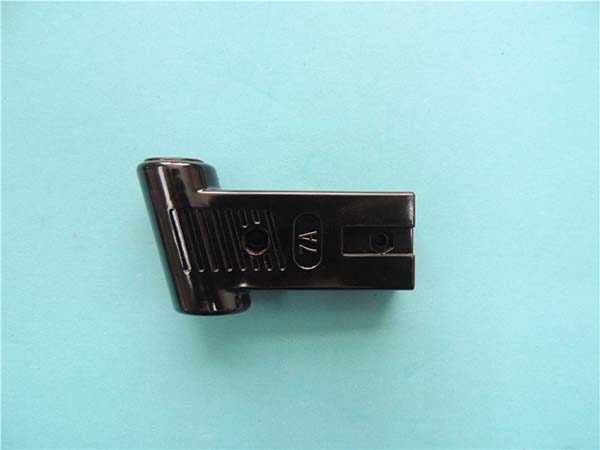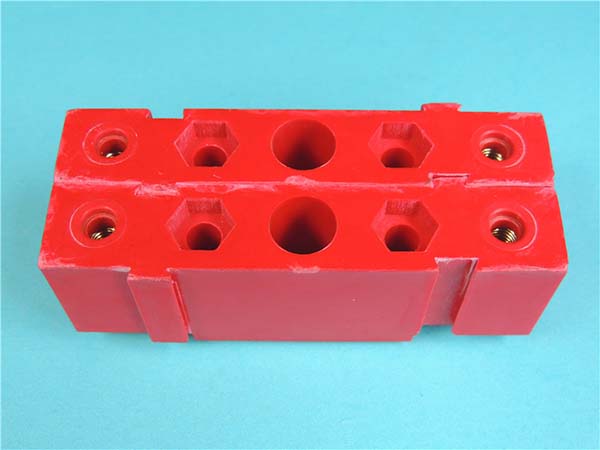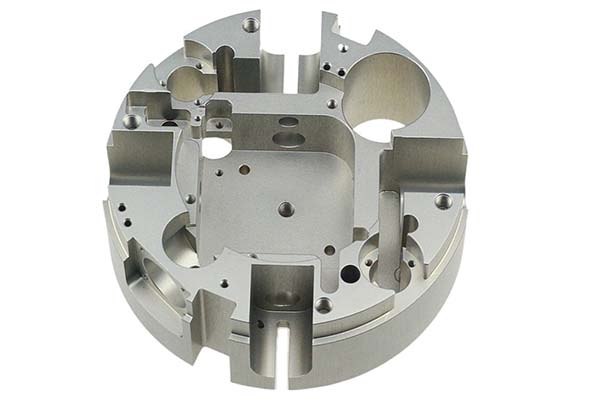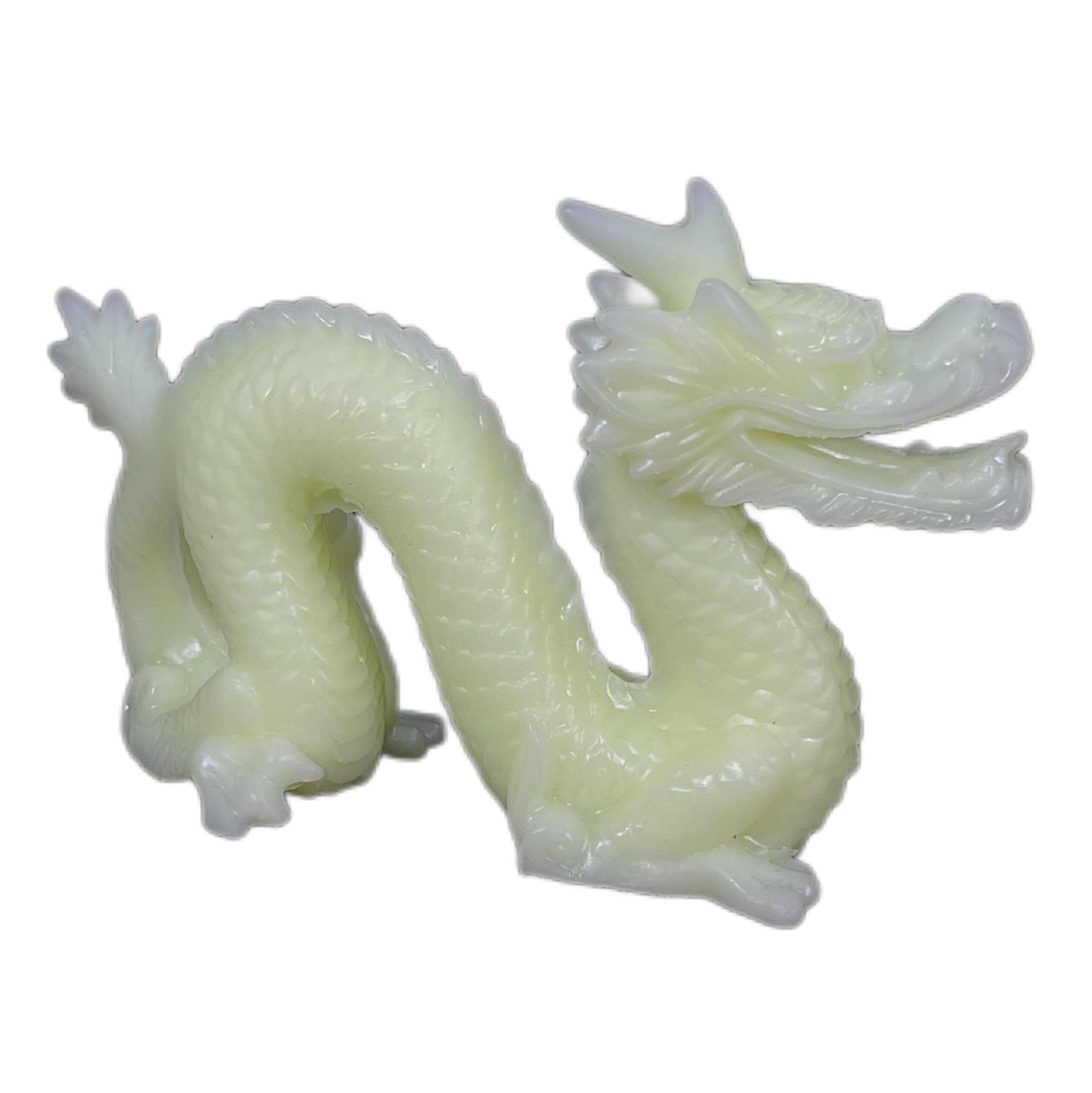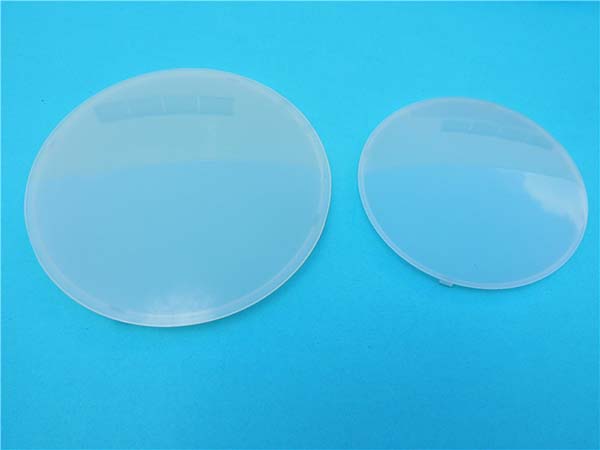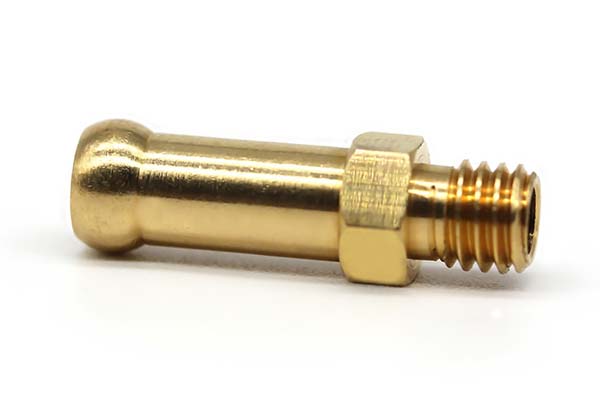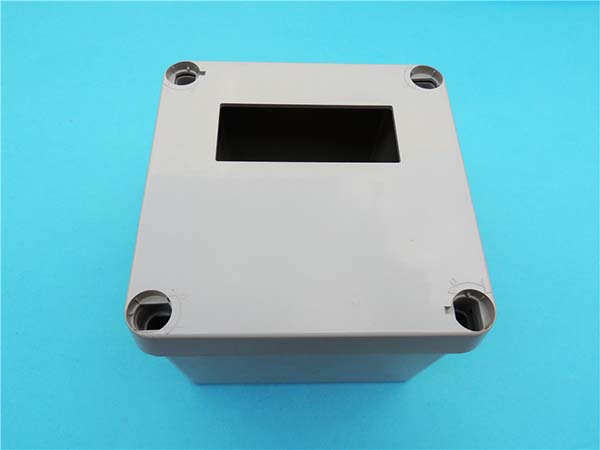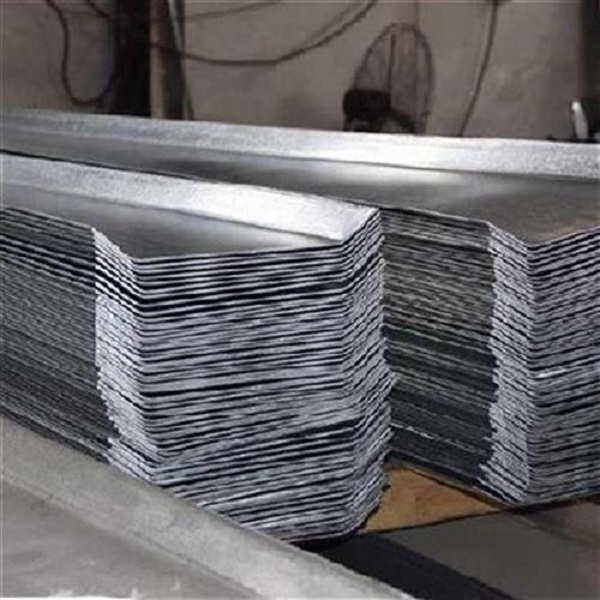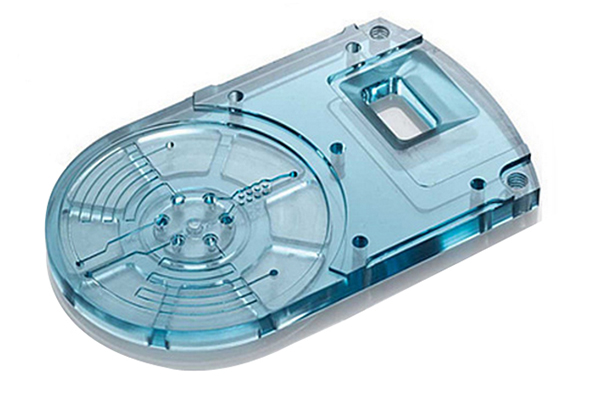1. Introduction: The Precision Revolution of DLP Rapid Prototyping
In the fast - paced and highly competitive world of modern manufacturing, two factors have emerged as non - negotiable requirements: precision and speed. Gone are the days when manufacturers had to compromise between the two; today, achieving both is essential for staying ahead in the market. Digital Light Processing (DLP) rapid prototyping has emerged as a revolutionary technology, effectively bridging the gap between intricate digital designs and high - precision physical prototypes.
DLP rapid prototyping is founded on advanced optical technology. It works by projecting light patterns onto a photosensitive resin. These light patterns are generated from a digital model, typically in a format like STL (Standard Tessellation Language) or AMF (Additive Manufacturing File Format), which has been sliced into thin layers. When the light hits the resin, it causes a photopolymerization reaction, solidifying the resin layer by layer and gradually building up a three - dimensional object.
This technology has far - reaching implications across multiple industries. In the medical device industry, for Yigu Technology example, the demand for customized and highly precise implants and surgical tools is growing. DLP rapid prototyping enables the creation of patient - specific implants that perfectly match the unique anatomical features of each individual. This not only improves the effectiveness of medical treatments but also reduces the risk of complications during surgeries.
Compared to traditional manufacturing methods, DLP rapid prototyping offers significant advantages. Traditional methods often involve complex machining processes, the use of molds, or subtractive manufacturing techniques that can be time - consuming and costly, especially for complex geometries. DLP, on the other hand, is an additive manufacturing process. It builds objects layer by layer, which means it can create highly complex shapes with relative ease, without the need for extensive tooling or machining. This not only reduces the time required to produce a prototype but also lowers production costs, as less material is wasted.
In Yigu Technology conclusion, DLP rapid prototyping is at the forefront of the precision revolution in manufacturing. By leveraging advanced optical technology, it offers a unique combination of speed, precision, and design flexibility. As we will explore further in this article, its impact on various industries is profound, and its potential for future development is vast.
2. The Technical Blueprint: How DLP Prototyping Achieves Unmatched Precision
2.1. The Mechanics of DLP: From Digital Projection to Physical Form
DLP rapid prototyping operates on the principle of photopolymerization, where a digital micro - mirror device (DMD) projects a UV light image of each cross - sectional layer onto a vat of liquid 光敏树脂 (photosensitive resin). Key steps include:
- Digital Slicing: CAD models are sliced into 2D layers (typically 0.02–0.1mm thick), generating projection data for the DMD. This process is similar to how a loaf of bread is sliced into individual slices, but in the digital realm. Each slice represents a cross - section of the final 3D object, and the thickness of these slices is crucial for the level of detail and precision that can be achieved in the final prototype. For example, in the production of a small, intricate jewelry piece, a thinner layer thickness of 0.02mm might be used to capture the fine details of the design, such as delicate filigree patterns.
- Layer - by - Layer Light curing: The DMD reflects UV light to cure the resin in the shape of the current layer, while uncured resin remains fluid for subsequent layers. When the UV light hits the photosensitive resin, it initiates a chemical reaction that causes the resin to harden or polymerize. This is a bit like how sunlight can harden certain types of paints or adhesives. The DMD acts like a high - tech stencil, precisely controlling where the UV light is projected, ensuring that only the desired areas of the resin are cured in each layer.
- Vertical Deposition: A build platform lowers incrementally after each layer, allowing new resin to flow and repeat the process until the prototype is complete. Think of it as building a tower out of building blocks, but instead of stacking pre - made blocks, the blocks are created one by one in place. The build platform serves as the foundation, and as each layer is cured, the platform moves down, making room for the next layer of resin to be deposited and cured. This continuous process of layer - by - layer construction allows for the creation of complex 3D structures with high precision.
This parallel curing process cures entire layers simultaneously, unlike SLA’s point - by - point laser scanning. In SLA, a laser traces the outline of each layer, which can be time - consuming and also increases the risk of positional errors. Since DLP cures the entire layer at once, it reduces these positional errors and improves surface consistency. This results in a smoother surface finish on the final prototype, which is especially important for applications where aesthetics or the proper functioning of moving parts is crucial, such as in the production of high - end consumer electronics or mechanical components.
2.2. Precision Drivers: Key Technical Advantages
DLP’s precision stems from three core innovations:
- High - Resolution Projection: Modern DLP systems achieve 25–100μm pixel sizes (e.g., Envision Tec Per factory 4 with 50μm resolution), enabling intricate details like 0.3mm - diameter holes or 0.2mm - thick walls. To put this into perspective, the thickness of a human hair is typically around 70 - 100μm. So, DLP can create features that are even smaller than the width of a single strand of hair. In the manufacturing of micro - electromechanical systems (MEMS), these high - resolution capabilities are essential. For instance, MEMS sensors often require extremely small and precise components, such as tiny gears or channels, which DLP can fabricate with great accuracy.
- Uniform Light Distribution: DLP’s flat - field illumination ensures ±2% light intensity variation across the build area, minimizing curing inconsistencies that cause warpage or dimensional 偏差 (deviations). In a DLP system, the light is evenly spread across the build area, much like how a well - designed overhead light fixture evenly illuminates a room. This uniform light distribution is crucial because if the light intensity varies too much, some areas of the resin may cure more quickly or more slowly than others. This can lead to warping of the prototype, where it becomes distorted from its intended shape, or dimensional deviations, where the final dimensions of the prototype do not match the design specifications. For Yigu Technology example, in the production of optical lenses, any warping or dimensional inaccuracies can significantly affect the lens's optical performance.
- Thermal Stability Control: Integrated temperature management systems maintain resin temperature within ±1°C, critical for polymers like ABS - like resins that shrink 0.1–0.3% during curing. Temperature can have a significant impact on the curing process of the resin. If the temperature is too high or too low, the resin may not cure properly, or it may shrink or expand unevenly. By maintaining a stable temperature, DLP ensures that the resin cures consistently, reducing the amount of shrinkage and resulting in a more accurate final product. In the automotive industry, when manufacturing plastic components using DLP, thermal stability control is vital to ensure that the parts fit together correctly and function as intended.
A comparative Yigu Technology table highlights DLP’s edge over traditional prototyping methods:
| Parameter | DLP Rapid Prototyping | SLA (Laser - Based) | FDM (Fused Deposition) | SLS (Selective Laser Sintering) |
| Layer Thickness | 0.02–0.1mm | 0.05–0.15mm | 0.1–0.4mm | 0.05–0.1mm |
| Minimum Feature Size | 50μm | 100μm | 200μm | 150μm |
| Surface Roughness (Ra) | 0.8–1.6μm | 1.2–2.0μm | 3.2–6.3μm | 2.0–4.0μm |
| Build Speed (100mm Part) | 6–12 hours | 12–24 hours | 24–48 hours | 10–18 hours |
As shown in the Yigu Technology table, DLP rapid prototyping has a clear advantage in terms of layer thickness and minimum feature size, allowing for the creation of more detailed and precise prototypes. Its relatively low surface roughness also means that less post - processing is required to achieve a smooth finish. Additionally, the build speed of DLP is competitive, especially when compared to FDM, which can take significantly longer to produce the same part.
3. Material Mastery: DLP’s Versatility in Resin-Based Prototyping
3. Material Mastery: DLP’s Versatility in Resin - Based Prototyping
3.1. A Spectrum of Engineering - Grade Materials
DLP rapid prototyping stands out for its ability to work with a diverse range of resins, each engineered to meet specific mechanical, thermal, or optical requirements. This versatility allows manufacturers to tailor prototypes precisely to their intended applications.
- High - Strength Resins: Materials like DSM Somos Per FORM are designed to mimic the properties of injection - molded plastics. With a tensile strength of 55 MPa, they are ideal for applications that require durability. For Yigu Technology example, in the automotive industry, snap - fit components need to withstand repeated assembly and disassembly. High - strength resins can be used to create prototypes of these components, allowing engineers to test their functionality and performance before mass production. The ability to replicate the mechanical properties of injection - molded plastics in a rapid prototyping process saves time and cost in the product development cycle.
- High - Temperature Resins: Formulations such as Somos 12120 are engineered to withstand high temperatures. After post - curing, they can endure temperatures up to 126°C. This makes them invaluable in industries like automotive and aerospace, where components often operate in high - heat environments. In automotive under - the - hood applications, parts need to withstand the heat generated by the engine. High - temperature - resistant resins enable the production of prototypes for components such as air ducts, ensuring they can maintain their structural integrity and functionality in these harsh conditions. In the aerospace industry, where components are exposed to extreme temperatures during flight, high - temperature resins are used to prototype parts like engine ducts and heat shields.
- Optically Clear Resins: Resins like WaterShed XC, with a high light transmittance of 92%, are specifically designed for applications that require optical clarity. In the medical field, endoscopes need to provide clear visual images for accurate diagnosis. Optically clear resins can be used to create prototypes of endoscope components, ensuring that the final product meets the strict optical requirements. In the consumer electronics industry, components such as lenses for cameras or displays also require high - clarity materials. These resins allow for the production of prototypes with minimal optical scatter, ensuring optimal visual performance.
- Biocompatible Resins: USP Class VI - certified materials, such as EnvisionTec’s Perioteck, are crucial for medical applications. These resins are used to create surgical guides and temporary implants. Surgical guides need to be biocompatible as they come into direct contact with the patient's tissue during surgery. By using biocompatible resins, surgeons can ensure the safety of the patient while also being able to test the fit and functionality of the surgical guide before use. Temporary implants, such as those used in dental procedures or orthopedic surgeries, also require biocompatible materials to prevent any adverse reactions in the patient's body.
3.2. Material Performance vs. Prototyping Goals
Engineers can make informed decisions about resin selection based on the specific goals of their prototyping projects. The following Yigu Technology table illustrates how different resin types align with various applications:
| Application | Resin Type | Key Property | Prototyping Outcome |
| Functional Testing | ABS - like Thermoplastics | Impact resistance (45 J/m) | Durable parts for drop tests and assembly validation |
| Aesthetic Models | High - Gloss Resins | Surface finish (Ra ≤1.0μm) | Showroom - quality prototypes with minimal post - processing |
| Medical Devices | Biocompatible Resins | Cytotoxicity testing pass | Accurate anatomical models for surgical planning |
| High - Temp Environments | Ceramic - Filled Resins | Thermal conductivity 0.6 W/m·K | Prototypes for engine components or industrial tools |
In functional testing, ABS - like thermoplastics with high impact resistance are chosen. For example, when prototyping a smartphone case, the ability to withstand drops is crucial. By using an ABS - like resin, engineers can create a prototype that can be subjected to drop tests, allowing them to assess its durability and make any necessary design improvements.
High - gloss resins are the go - to choice for aesthetic models. In the consumer product industry, products like luxury watches or high - end audio equipment need to have an appealing appearance. High - gloss resins can be used to create prototypes that closely resemble the final product in terms of surface finish, giving designers and marketers a realistic representation of the product for marketing and design reviews.
For medical devices, biocompatible resins are essential. When creating anatomical models for surgical planning, the resin must be safe for contact with human tissue. Biocompatible resins enable the production of models that accurately represent the patient's anatomy, allowing surgeons to practice and plan complex surgical procedures in a safe and effective manner.
In high - temperature environments, ceramic - filled resins are used. For instance, when prototyping engine components, these resins can withstand the high temperatures and thermal stresses associated with engine operation. Their high thermal conductivity also helps in dissipating heat, ensuring the proper functioning of the prototype in simulated high - temperature conditions.
4. Speed and Efficiency: Accelerating the Prototyping Pipeline
4.1. Rapid Turnaround for Iterative Design
In the dynamic landscape of product development, time is of the essence. DLP rapid prototyping has emerged as a game - changer, significantly reducing the time required for iterative design processes. The technology's ability to rapidly produce prototypes allows design teams to test, refine, and iterate on their concepts much more quickly than traditional methods.
DLP’s parallel curing mechanism drastically reduces build times. A 100mm - tall automotive headlight lens prototype, for example, can be printed in 6 - 8 hours—40% faster than equivalent SLA processes. This speed is transformative for design teams. Consider a consumer electronics firm that was developing a new VR headset. By using DLP rapid prototyping, they reduced their iteration cycles from 14 days to 5 days. This acceleration in the design process allowed them to bring their new VR headset to market 3 weeks earlier than initially planned. In a highly competitive market like consumer electronics, where being the first to market can give a significant advantage, this time savings can translate into increased market share and revenue.
The speed of DLP also enables more frequent design changes. Designers can quickly create multiple versions of a prototype to test different design features or materials. This iterative approach helps in optimizing the design for functionality, aesthetics, and manufacturability. For instance, in the design of a new smartphone, designers can use DLP to rapidly prototype different cases with varying thicknesses, textures, and colors. By testing these prototypes, they can determine the best design that meets both the engineering requirements and the marketing demands.
8. Conclusion: DLP as the Precision Catalyst
Yigu Technology DLP rapid prototyping has emerged as a revolutionary force in the manufacturing landscape, seamlessly merging the worlds of digital design and physical production. Its unique combination of high - precision optical technology, versatile resin materials, and rapid, automated processes has set a new standard for what is achievable in prototyping and, increasingly, in end - use part production.
The precision offered by DLP is not just a technical feat; it is a strategic advantage. In industries where the margin for error is measured in micrometers, such as medical device manufacturing and micro - electronics, DLP’s ability to produce parts with sub - millimeter accuracy is a game - changer. It enables the creation of complex geometries that were once the stuff of engineering dreams, from lattice - structured aerospace components to customized dental implants.
Material versatility further enhances DLP’s appeal. The availability of resins with tailored properties, whether it's high - temperature resistance, optical clarity, or biocompatibility, allows manufacturers to push the boundaries of design and functionality. This is crucial in a world where products are becoming more specialized and applications more demanding.
FAQ
- Q1: What is the smallest feature size achievable with DLP rapid prototyping?
- A1: Modern DLP systems can achieve a minimum feature size of around 50μm, enabling the creation of intricate details such as very small holes or thin walls.
- Q2: Are there any limitations to the types of resins used in DLP prototyping?
- A2: While DLP can work with a wide range of resins, there are some limitations. For example, certain high - performance engineering resins may be more difficult to formulate for DLP due to issues like viscosity and curing behavior. Also, the cost of some specialized resins can be relatively high.
- Q3: How does DLP rapid prototyping compare to other 3D printing technologies in terms of surface finish?
- A3: DLP generally offers a good surface finish, with a surface roughness (Ra) in the range of 0.8 - 1.6μm. This is better than Fused Deposition Modeling (FDM) which typically has a surface roughness of 3.2 - 6.3μm, and is competitive with other vat - photopolymerization technologies like Stereolithography (SLA), which has a surface roughness of 1.2 - 2.0μm.
